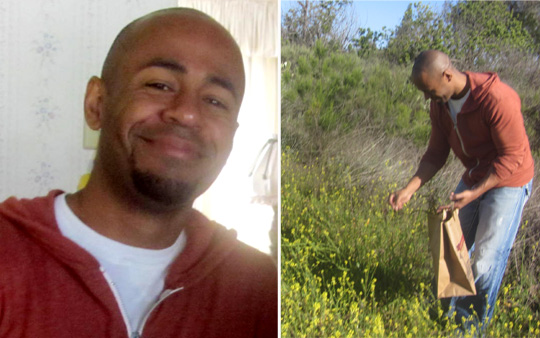
Today I met Sean Croxton, the most exciting real health and nutrition blogger and podcast host on the web. As a Functional and Diagnostic Nutritionist, he posts fascinating and extremely helpful research and reviews on his blog site, Underground Wellness. But I would also characterize him as a renegade and a rebel with a serious cause. Sean has been a fixture and a great influence in our home for over 3 years as Jason and I have listened to his podcasts, watched his videos, read his blogs, and purchased his ‘must have’ ebook, The Dark Side of Fat Loss.
Our family has been on a decade long health journey. We have gone from processed ‘convenience’ foods to whole foods, soda addiction to fluoride free water, vegetarian to happy meat eaters, low fat milk to creamy raw milk, veggie oils to coconut oil, toxic home cleaning products to making my own from wild plants, store-bought veggies to organic and home grown or Farmer’s Market purchases, being a night owl to realizing the need to get to sleep in the pitch black with the sun’s rhythms….and finally the radical change from breads and pastas with a satisfying chew factor to wheat free living (still working on that one, perhaps the hardest).
But today…I expanded Sean’s horizons for a change. I think that he is on his way to becoming a WILD foodie.
Early in the Morning
Since I was traveling to San Diego (where Sean lives) to help my mother-in-law, I contacted him and offered to introduce him to the world of wild edible plants. When he joined me near Lake Murray at 7:30 in the morning, the air was still brisk so we hit the trails with grocery bags, rubber bands, scissors and a shopping list for wild edibles to harvest fresh for breakfast. After a plant walk and harvesting ripened plants around the beautiful lake, we came back to the kitchen and cooked this menu.
A WILD BRUNCH
Nopales (Prickly Pear Pad) Salsa Omelet
Wild Greens & Bacon (Yellowdock, Clover, Fennel, Bulrush)
Gluten Free Muffins

Lake Murray is a destination to be experienced any time of day . Besides a profusion of wild edible plants the wild life is notable: geese, ducks, coots, herons, cormorants, swans, red wing blackbirds seemed to be everywhere.
On our way to the hummingbird’s nest (our turn around point) I taught him about five different edible wild plants, describing their botanical uniqueness, letting him nibble and sniff as I told him what parts to eat and when they were the most tasty. I discussed a handful of medicinal uses for each plant along with practical ways some of the plants were used by generations long ago. By the time we made it back to our starting point, he could identify all five. On the trail doubling back he filled his grocery bag with a selection for breakfast.
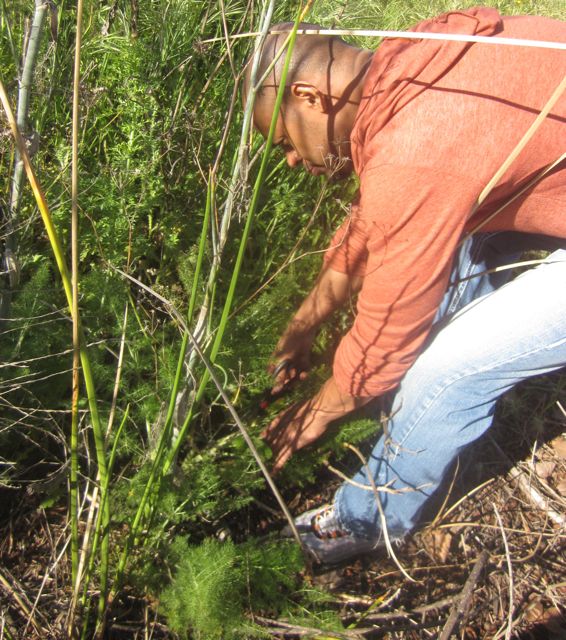
The Shopping List
Our list included 4 stalks of Fennel, 10 young Yellowdock leaves, 3 bunches of young juicy Clover, 10 Bulrush stems, 1 bunch of Horehound, Eucalyptus branch, 10 yellow Mustard flowers. I had prepared the prickly pear salsa and the jam (more like a syrup) in advance.
We walked trails that wind through the brush down to and around the water. The sun skipped across the lake reflecting a cloudless sky. Giant Eucalyputus trees with their branches laden with flowers and pods exuded their menthol odor as we sniffed their leaves. Bullrushes lined the shore at multiple places, each huge cluster representing enormous food supplies.
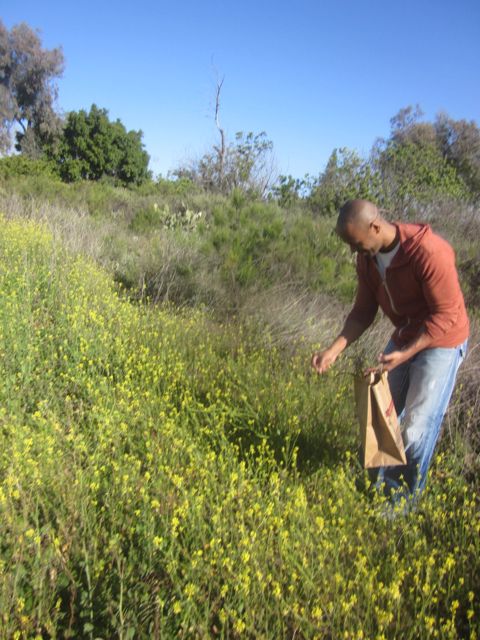
Any reservations Sean may have had about foraging for wild edible plants evaporated as he became a rapt student asking many questions. His hesitant attitude when we started transitioned to a real sense of enjoyment at discovering a new avenue for finding healthy food sources right under his feet.
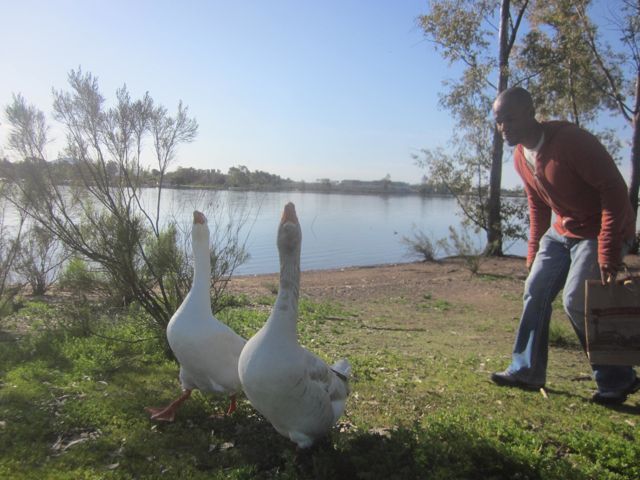
So what about Fennel, Horehound, Hops Clover, Bulrush, Prickly Pear and Yellowdock? Below is a short description of each but I have also written plant profiles for several of them, complete with pictures to help ID them, info on when to harvest and how plus recipes. Just click on each hyperlinked word.
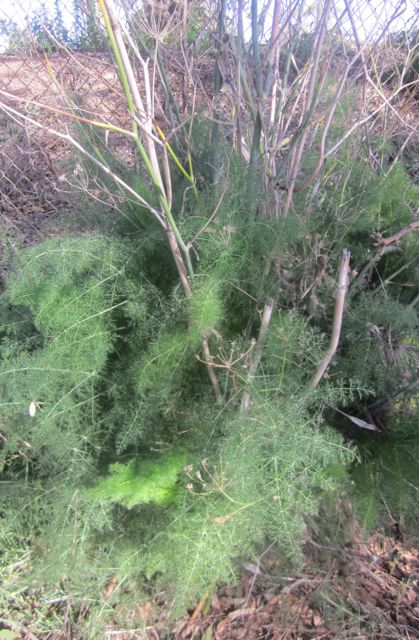
Fennel: An invasive plant that offers a pungent licorice flavor, many medicinal gifts and tasty celery like stalks. Sean nibbled on a seeds set from last Fall and commented on it’s sweet licorice flavor. I told him of it’s digestive magic in easing flatulence and other stomach upsets. All above ground parts are edible. Eat and cook with Spring Fennel shoots as celery. Use in salads, soups, or as a cooked vegetable. The flowers, leaves and seeds add a strong anise or licorice flavoring in teas, cooking and baking.
Nutritionally Fennel is high in Vitamin A and C.
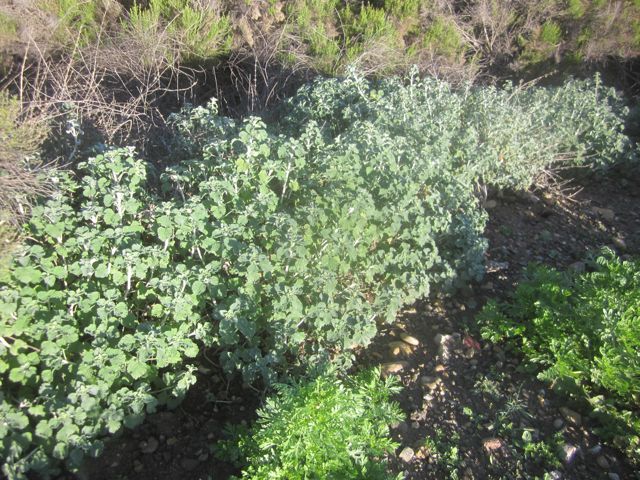
Horehound: Horehound is more medicinal than edible. Though I did make some really tasty Horehound cough drops which can pass as candy! There is such as profusion of Horehound around Lake Murray that I think this is a plant worth investigating and using for a plethora of common ailments. As a bitter, it promotes bile and gallbladder health. It is a strong anti septic and expectorant useful for soothing coughs and even bronchitis. As a vaseodialator is dilates arteries and helps normalize the heart beat. Interesting to note that my mother in law is hospitalized at a cardiac center in Lajolla for an irregular heart beat. Wouldn’t hurt to try a cup of horehound tea…

Prickly Pear: I did not realize till after I harvested some tunas and one nopales that it is illegal to harvest any cactii in CA unless it is in your own yard. Oops. I recommend to you Southwest dwellers that you plant Prickly Pear in your yard or in a huge pot on your balcony it is a fabulous food source. The fruits are called tunas and are covered with tiny evil hairs called glochids. Read my post on how to harvest them without becoming getting porcupine hands. If however you do get skewered the best way to removed them is with clear nail polish…. But I digress… The fruits are high in Vitamin A, Vitamin C, calcium, potassium and magnesium, rich in flavanoids and antioxidants, taurine (an amino acid that promotes brain and hearth health) Make jam, jelly, syrup and candy with them.
The Prickly Pear pads are called Nopales. they too must be handled with care! They are famous for their powerful ability to lower blood sugar and are considered a diabetics super food. The pads are high in iron, beta carotene, Vitamin C and calcium. The thicker the pad is the older it is and a bit stringier to eat, so go for the young Spring pads for the best flavor. They taste like slimy green beans, similar to okra. Poultices are made from sliced open pads to fight infection to speed healing of wounds. Chop pads into salads, omelets, salsa, casseroles…. I prefer boiling the chopped pads first before putting them in salads or salsa.

Yellowdock: Dock means big leaf, and the yellow is referring to the yellow roots of this plant, Rumex crispus. The easiest way to find it is by the tall seed head from last season. There can be as many as 30,000 seeds on a single Yellowdock plant and they are viable for up to 50 years. The seeds can be winnowed from their papery husks, roasted, ground and made into flour for making breads and crackers. The young green leaves use as spinach, stir fries, soups, stews (chop to small pieces)… raw they are quite bitter but bitter is good. Spring bitter greens like Yellowdock are a tonic to cleanse and purify blood after a winter without fresh greens. Medicinally: stimulates the liver, treats anemia with it’s high iron content. Leaves and roots are used as a soothing poultice for wounds. If stung by Stinging Nettle, scrub the Yellowdock leaves over the agitated skin till the sting disappears, like magic!
Nutritional benefits: High levels of Vitamin A, Vitamin C and the best plant source for iron. Use in moderation because of it’s high oxalic acid content (which heats away when cooking)
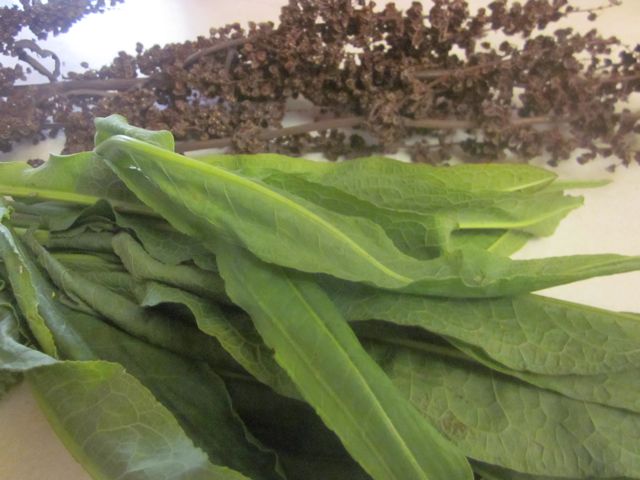

Hops Clover: There are many varieties of Clover, the most common where I live in North Carolina are the red and the white Clovers. But they are all edible and nutritious. The bloom of the hops clover is yellow and elongated, very different from the sweet red blossoms I love to forage for in my mountain pastures.

Bulrushes: Among the most useful of edible plants. I have never had experience with the Bulrush till I saw them lining Lake Murray, but I am intimately acquainted with Cattail which is similar in it’s wild gifts of food and medicine. As usual it is key to ride nature’s wave with understanding of when it is offering what and how to harvest it and eat it in the most nutritional phase. I can only write what I read about this particular plant because Sean and I only tried the young stem in our stir fry. (Not nearly as tasty as the cucumber texture and flavor of a Cattail shoot) but then I may have missed the ‘right’ time to harvest. The best part of the root to eat is the newest growth at the end of the rhizome It can be peeled and eaten raw, roasted, boiled or dried and used ground as flour. The edible seeds are prepared as you would prepare wild rice. The pollen is used to add nutrition to bread and pancakes. The stems as cattail stems and the cordage can be used for mats, thatch and baskets. As Cattail, be careful to harvest in a non contaminated area.

In the kitchen Sean sort the plants into like piles and then washed, chopped and cooked our selection. He stir-fried a bacon & wild greens dish while I cooked the omelets with prickly pear pad salsa stuffed inside.

We included dark roasted dandelion root coffee that accompanied gluten free cranberry orange muffins. Orange slices, avocado and mustard flowers decorated our overflowing plates. It was wildly delicious. Here is a photo of skinned Nopales (Prickly Pear pads) ready to boil and the Nopales salsa before I stuffed them in the omelets.

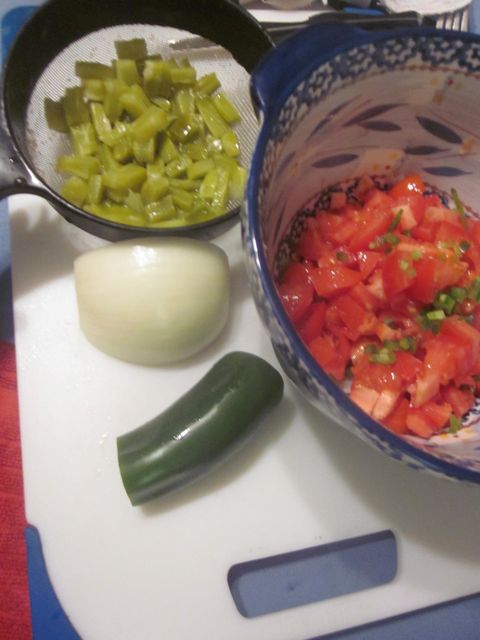
httpv://youtu.be/FqL9uAAbWoE
Sean, it was a joy spending time with you after hearing you for years in my ear buds! May you make time to connect with creation often and may you never see a plant as just a plant – ever again! Thanks for taking the time to forage and feast with me.
“Oh Lord, how many and varied are Your works. In wisdom You have made them all. The whole earth is full of Your riches.” Psalms 104:24
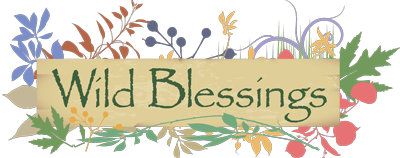
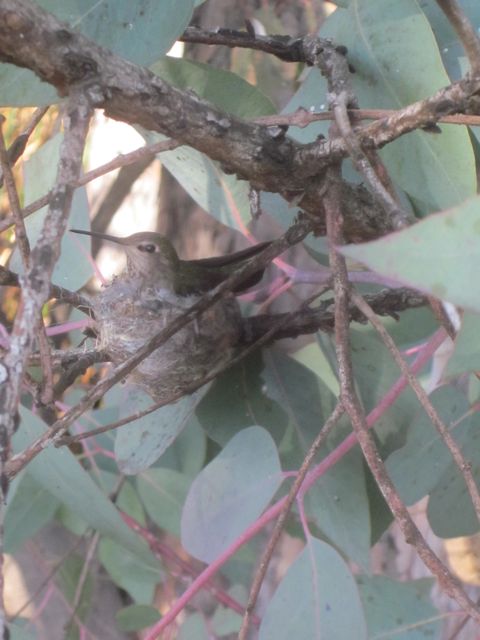
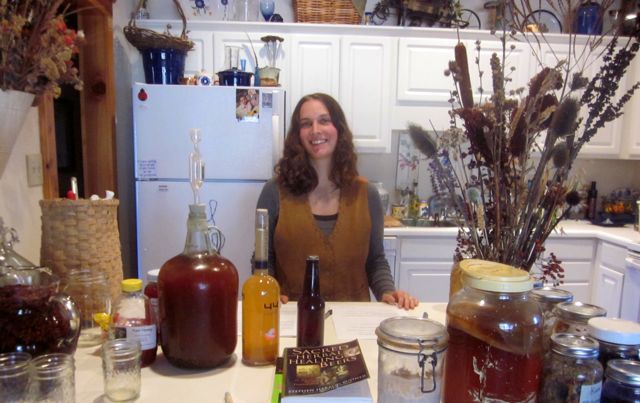
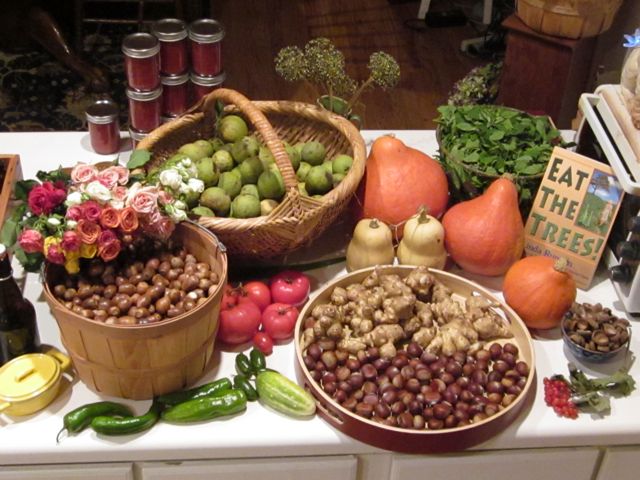
I can’t beleiee you came to CA and didn’t tell me! I would have met you somewhere! Great blog, lovely pics.
I was a woman with a mission! Taking care of my mother in law with her newly fracture knee was my mission. Foraging only happened three times. Next time I’m in San Diego I’ll let you know.
Hey, there, Holly! It’s so cool that you were here, and like Heather, I’m sorry I missed you. I do hope your mission was successful.
As usual, you are so exciting to follow, but I cannot keep up with all the great stuff you’re doing. Today, I went to Kern River again to check the progress of plants I have been watching. At the end of March, our 4H group will be out there learning some foraging tips, identifying plants and sampling some of them. I can hardly wait!
Have you ever pickled cattail? I can’t remember reading about that here, but I will check again. Anyway, I gathered enough to pickle one jar of cattail as an experiment. It looks beautiful. We’ll see if they are a success.
Until later…God bless
Have I ever picked Cattail…….
https://wildblessings.com/cattails/
One of my favs!
So happy to hear how you are spreading the ‘wild’ fire with children. Keep it up!
That is so great that you got to meet Sean Croxton! I have been so blessed by him and all the great information that he has put together and researched for a traditional diet!
Now there is a dynamic duo – the Underground Heath warrior and you! Great blog Holly and what a fabulous opportunity for you to share God’s goodness!
Hi Holly,
Was given your website by Rosary Shepard with Of The Field as a contact to possibly do a foraging class up here in the mountains. I’m 25 miles from Mt. Mitchell so not sure how close you are. Would like to talk with you to see what upcoming classes you have scheduled. There are others in my Bible class that are interested as well. Hope to hear from you soon. Be blessed
Hi Cheryl, I still do foraging classes and feasts but only upon request. I’ll be doing a food security webinar soon. I would love to meet you someday! Hugs to Rosary!